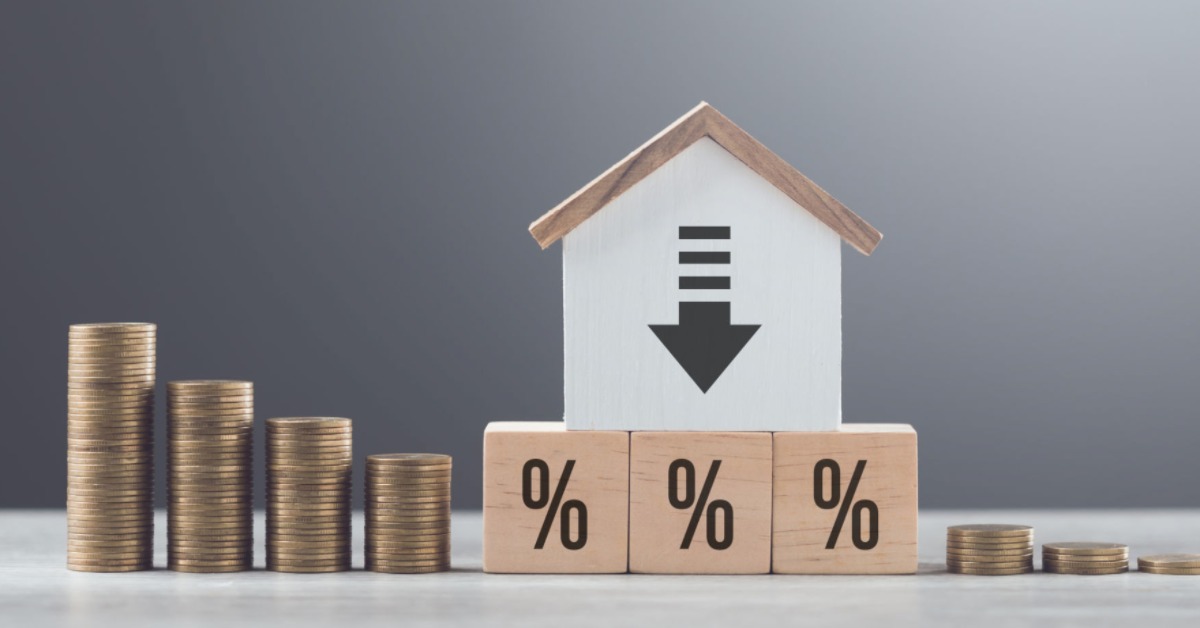If you're looking to buy a home, there's some good news! According to Freddie Mac's Primary Mortgage Market Survey, the 30-year fixed mortgage rate has dropped to a four-week low this week, hovering around 6.81%. This slight dip could be just the thing to get some potential homebuyers off the fence.
It's no secret that buying a home has been tough lately. High home prices and fluctuating mortgage rates have made it challenging for many. But a little good news can go a long way, right? I think so! Let's dive into why we're seeing this slight drop and what it could mean for you.
Today's Mortgage Rates: 30-Year Fixed Rate Drops to Four-Week Low
What's Causing the Dip?
Several factors are contributing to this minor, yet significant, downward trend:
- More Homes on the Market: Inventory is increasing. More homes available means less competition and potentially more negotiating power for you, the buyer.
- Cautious Federal Reserve: The Federal Reserve (The Fed) is playing it cool. They've decided to hold steady on interest rates, which helps keep mortgage rates in check.
- Market Stability: The combination of economic data, the Fed's decisions, and housing market dynamics are creating a sense of stability, which translates to less volatility in mortgage rates.
The Current State of Mortgage Rates
Here's a snapshot of where mortgage rates stand as of June 18, 2025:
| Loan Type | Rate | 1-Week Change | 1-Year Change |
|---|---|---|---|
| 30-Year Fixed | 6.81% | -0.03% | -0.06% |
| 15-Year Fixed | 5.96% | -0.01% | -0.17% |
As you can see, both the 30-year and 15-year fixed mortgage rates have seen slight decreases. A small change, yes, but it's a step in the right direction!
The Fed's Role and Why It Matters
The Fed doesn't directly set mortgage rates. However, their actions have a huge impact. Mortgage rates often mirror the yields on 10-year U.S. Treasury bonds. Investors are very sensitive to the Fed's policies and broader economic sentiment.
When the Fed acts cautiously, like they did this week, it reassures investors. This reduces volatility in the bond market, keeping mortgage rates more stable.
The Federal Reserve opted to maintain the federal funds rate within the range of 4.25% to 4.5%, a level it has held since December 2024.
What the Fed Said (and Didn't Say)
At their June meeting, the Fed decided to keep the federal funds rate unchanged, holding it between 4.25% and 4.5%. They've been at this level since December 2024. This decision didn't come as a surprise, because the market was already anticipating it.
In their official statement, the Fed noted that the economy is still growing, and the job market is strong. However, Inflation is still considered somewhat elevated, and there is ongoing uncertainty (but less than before) about where the economy is headed.
Inflation and Economic Data: A Balancing Act
Recent inflation data shows a slight uptick, with the Consumer Price Index (CPI) rising to 2.4% in May. The Federal Reserve’s stance is partly a response to this data, aiming to avoid stoking inflation while not derailing economic growth. This delicate balance supports stable mortgage rates.
The Fed’s goal is to strike a balance: they want to keep inflation under control while also ensuring the economy keeps growing. This balancing act directly impacts mortgage rates.
Why is this important?
- Control Inflation: They don't want prices to rise too quickly.
- Promote Growth: They want the economy to continue expanding and creating jobs.
Market Uncertainty and Treasury Yields
There's still a lot of uncertainty out there, like geopolitical tensions and domestic policy shifts. Because the markets are always unsure what will happen, this has driven some investors toward the safety of U.S. Treasury bonds, which helps keep yields (and thus mortgage rates) from rising sharply. The 10-year Treasury yield has hovered around 4.4%, a level that supports current mortgage rate stability.
Housing Market Trends: More Options for Buyers
Inventory issues have been a big topic for a while now. More houses for sale means buyers have more options and potentially more flexibility in their negotiations.
The data shows that with increased housing inventory and a slight dip in rates, some buyers are heading back into the market. But, to be honest, high home prices are still tempering demand. It's a mix of good news and ongoing challenges.
The Fed's “Dual Mandate” and Political Factors
The Fed has a “dual mandate” which means they have to accomplish 2 things:
- Maximum Employment
- Stable Inflation
But it's not that simple because they are dealing with political pressures and potential inflationary impact of new tariffs and policy changes, causing the Fed to have a cautious, data-driven approach that supports rate stability.
Related Topics:
Mortgage Rates Trends as of June 18, 2025
Will Mortgage Rates Go Down After No Cut by Fed in June 2025?
What Does This Mean for Potential Homebuyers?
So, what does all this mean if you're thinking about buying a home?
- Opportunity Knocks (Gently): The slight drop in rates and increased inventory is a positive sign. It might be a good time to start seriously looking.
- Don't Wait Too Long: While rates are relatively stable now, things could change quickly. It's essential to stay informed and be ready to act.
- Shop Around: Don't settle for the first mortgage rate you see. Get quotes from multiple lenders to ensure you're getting the best deal.
- Consider Your Options: Think about different mortgage types. A 15-year fixed might have a lower interest rate but higher monthly payments. A 30-year fixed offers lower monthly payments but you'll pay more interest over the long run.
My Personal Take
I've been following the housing market for years, and I've seen firsthand how quickly things can change. While the current stability is encouraging, it's important to remember that the market is still sensitive to economic news and policy decisions.
I think the Fed is doing a decent job of navigating a tricky situation. They're trying to balance inflation with economic growth, and their cautious approach seems to be helping keep mortgage rates stable for now.
It's not perfect, but this minor improvement could make a real difference for some buyers.
The Bottom Line: Now could be a good time to jump into the home-buying process if you have been on the sidelines!
What the Future Holds
Most experts agree that mortgage rates will likely stay relatively stable in the near future. Ofcourse, this can change in case of any big economic shocks.
The Fed has hinted at the possibility of rate cuts later this year if the economy cools down, but for now, they're sticking with their steady approach. Only time will tell, but hopefully the trend continues and everyone benefits!
Invest Smarter in a High-Rate Environment
With mortgage rates remaining elevated this year, it's more important than ever to focus on cash-flowing investment properties in strong rental markets.
Norada helps investors like you identify turnkey real estate deals that deliver predictable returns—even when borrowing costs are high.
HOT NEW LISTINGS JUST ADDED!
Connect with a Norada investment counselor today (No Obligation):
(800) 611-3060
Also Read:
- Will Mortgage Rates Go Down in 2025: Morgan Stanley's Forecast
- Expect High Mortgage Rates Until 2026: Fannie Mae's 2-Year Forecast
- Mortgage Rate Predictions 2025 from 4 Leading Housing Experts
- Mortgage Rates Forecast for the Next 3 Years: 2025 to 2027
- 30-Year Mortgage Rate Forecast for the Next 5 Years
- 15-Year Mortgage Rate Forecast for the Next 5 Years
- Why Are Mortgage Rates Going Up in 2025: Will Rates Drop?
- Why Are Mortgage Rates So High and Predictions for 2025
- Will Mortgage Rates Ever Be 3% Again in the Future?
- Mortgage Rates Predictions for Next 2 Years
- Mortgage Rate Predictions for Next 5 Years
- Mortgage Rate Predictions: Why 2% and 3% Rates are Out of Reach
- How Lower Mortgage Rates Can Save You Thousands?
- How to Get a Low Mortgage Interest Rate?
- Will Mortgage Rates Ever Be 4% Again?



